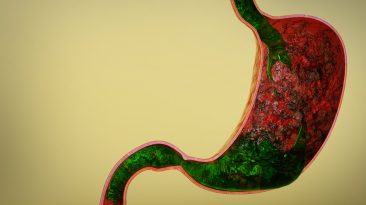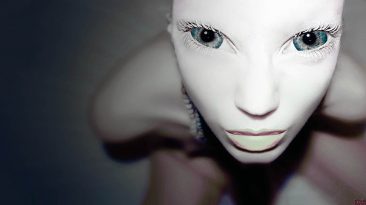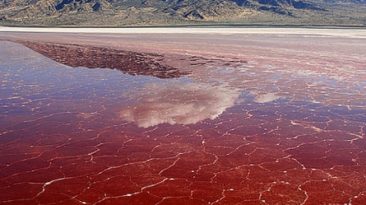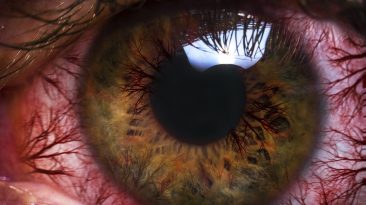Imagine how different your life would be if you had a condition that made your vision poor, being outdoors risky, and your appearance different from everyone else. Doesn’t sound easy. But for the duration of this episode, you’re going to experience what it would be like if you were albino.
Would you have red eyes? How would your genes be different? Why could the Sun kill you?
According to the National Organization for Albinism and Hypopigmentation, albinism occurs in all racial and ethnic groups. In the U.S., approximately one in 18,000 to 20,000 people has some type of albinism. In other parts of the world, the occurrence can be as high as one in 3,000.
It happens everywhere, but albinism is most common in sub-Saharan Africa. It can be difficult for albinos to make a living in these regions. Their skin is so sensitive to sunlight that they can’t do agriculture work.
And growing food is the main income-producing activity in many rural areas. But lack of income isn’t the only threat to albinos. In Tanzania, at least 75 people with albinism have been killed since 2000. What spurred these tragic murders?
In some parts of the world, it’s believed that albino body parts possess magical powers and are sold on the black market for as much as $75,000. Even if you don’t live in sub-Saharan Africa, you’d still face discrimination and stigma. And you’d have a lot of physical obstacles to overcome.
But what really is albinism and why does it have such a huge effect your body? It all starts with melanin. Melanin creates the color of your skin, hair, and eyes. You have several genes that produce and distribute this complex polymer.
But sometimes, one of those genes doesn’t work correctly, causing a lack of melanin. This results in the snow-white appearance that we imagine when we think about albinism. But there are actually different types of albinism. Oculocutaneous albinism affects your eyes, hair, and skin. It’s more common than Ocular albinism which only involves your eyes.
We’re going to stick with Oculocutaneous albinism in this episode, which is the type that affects your whole body. So what would happen if everyone became albino? We’re going to skip over the immediate chaos and jump to a future where we’ve got things a little more figured out.
And even though we’re all albino, you wouldn’t look like everyone else. The amount of melanin and pigmentation in your skin and hair would still differ from person to person. Your eyes would most likely be blue, but they could also be hazel or brown. And no, they wouldn’t be red.
Sometimes, an albino’s eyes can look red. That’s because the blood vessels at the back of the eye become visible when the lighting is just right. The whole red eyes thing is a myth.
Living with albinism, you’d definitely make different fashion choices. You’d want more coverage, especially in the summer. You’d enjoy wearing nice linen pants or long, lightweight dresses. Sun hats with large brims and big sunglasses would be all the rage. Why?
The lack of melanin in your skin would make you prone to skin cancer. In Africa, 90% of albinos die from skin cancer before they reach age 40. But with the right treatment and precautions, like protective clothing and sunscreen, you could avoid dangerous sun exposure.
Slathering your body in sunscreen would be part of your morning routine. You’d also stay indoors when the sunlight is most intense, only enjoying outside activities in the morning and evenings.
Or, you might decide to move to somewhere with less sunlight. Like Rjukan, a village in the south of Norway, nestled in between the mountains. It only receives direct sunlight for half the year.
But sunnier cities would adapt to everyone’s needs. Huge sun shades would be constructed outside restaurants and public areas. And supersensitive skin wouldn’t be the only thing you’d have to contend with. You’d also have problems with your vision.
Most albinos are legally blind. This means that your natural vision would not allow you to perform some everyday tasks without assistance. So we’d all be using handheld magnifiers, E-readers, and glasses. And braille could become the world’s most common written language.
But, with a legally blind population, our infrastructure would need some major changes. You’d mostly rely on a robust public transportation system outfitted with visual cues. If you have enough money, you’d own a self-driving, electric car.
And if you were one of the few people who were able to drive, you’d enter the specialized and highly sought-after field of driving. If everyone woke up one day inflicted with albinism, then hopefully we’d understand that there’s nothing mythical or superstitious about it. And we’d all have more compassion.
Albinos are people like you and me. And if we redesign our cities with everyone’s unique needs in mind, it could help all of us. How would your work and neighborhood change if everyone was completely blind?
Sources
- “Albinism – Symptoms And Causes”. 2021. Mayo Clinic.
- “What Is Albinism? | National Organization For Albinism And Hypopigmentation”. 2021. albinism.org.
- “Albinism: Causes, Types, And Symptoms”. 2021. Healthline.
- “Albinism in Africa: stigma, slaughter and awareness campaigns”. Cruz-Inigo, Andres E., Barry Ladizinski, and Aisha Sethi. 2011. Dermatologic Clinics 29 (1): 79-87. doi:10.1016/j.det.2010.08.015.
- “Fighting the stigma of albinism”. 2021. Sciencedaily.
- “What if all humans on Earth had albinism?”. 2021. livescience.com.



























